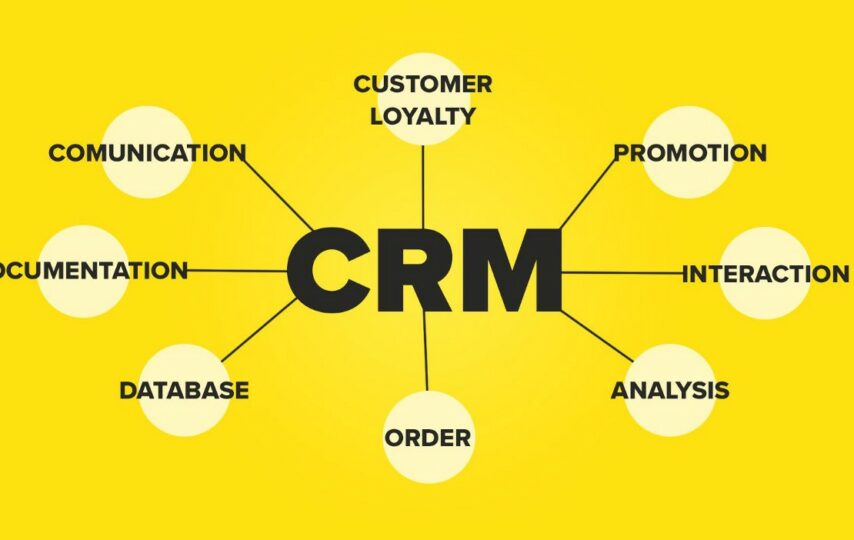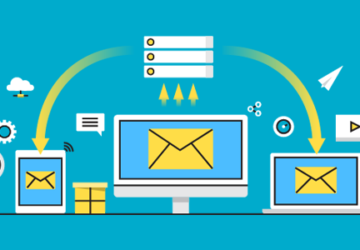The concept of customer relationship management (CRM) refers to the mix of strategies, practices and tools businesses use to monitor and analyze customer interactions and information throughout the lifecycle of a customer.
The aim is to enhance customer service, aid in customer retention, and increase sales. CRM systems collect customer information across various channels (or points of contact between the client and the business), including the company’s website and live chat, telephone mailing materials, direct mail, and social media.
CRM systems also provide staff members who deal with customers with details about customers’ details, their purchase information, purchasing preferences, and other concerns.
What are the benefits of CRM for businesses?
The system of CRM can be beneficial to organizations that range from small companies to corporations through:
- Information about customers, such as previous purchases and interactions readily available, can aid customer support reps in providing more efficient and speedier customer support.
- Access and collection of customer information allow businesses to find trends and information about their clients through visualization and reporting features.
- Automating mundane tasks but essential ones, such as customer support and sales funnel jobs.
Components of CRM
To the most fundamental degree, CRM software integrates customer data and documents it into a CRM database, so business users can access and control the information. Over time, various new capabilities have been added to CRMs to improve their effectiveness.
A few of these functions involve recording customer interactions through telephone, email or social media channels, based on the system’s capacities, automating various workflow automated processes, including tasks, calendars, and alerts.
They also allow managers to monitor efficiency and performance using the information stored in the system.
- Marketing automation. CRM tools with automated marketing capabilities allow for the automation of repetitive tasks, enhancing marketing strategies at various points throughout the lead generation process.
For instance, when leads from sales come into this system, they can automatically send emails with marketing content to transform an initial prospect for sales into a fully-fledged customer.
- Sales force automation. Automating salesforce tools monitor customer interactions and automate specific aspects of the sales process that are essential to follow up on leads, acquire new customers and increase customer loyalty.
- Contact center automation. To ease the burden of a contact center representative’s task, contact center automation could include pre recorded music, which assists customers in problem-solving and disseminating information.
Numerous software tools integrated with the agent’s desktop software can handle customer inquiries to cut back on time it takes to call and simplify the customer service process. Automated tools for contact centers like chatbots can improve user experience.
- Geolocation technology or services that use location to make decisions. Specific CRM systems have technology that lets you create geographic marketing campaigns based on customers’ sites, often integrating into popular locations-based GPS (global location system) applications.
Geolocation technology may also be utilized as a network and contact-management tool to identify potential sales leads based on a specific location.
- Automating workflows. CRM systems can help businesses improve processes by streamlining repetitive tasks and allowing employees to concentrate on higher-level and creative tasks.
- Lead management. Sales leads can be monitored via CRM, allowing sales teams to enter the data, track it and then analyze it for charges all in one location.
- Human resource management (HRM). CRM systems allow employees to keep track of information, like contacts, performance reviews, and company benefits. It enables HR departments to manage their workforce more effectively. HR department to better manage their internal workforce.
- Analytics. Analytics in CRM can create more satisfied customers through the analysis of the data of users and assisting in creating specific marketing campaigns.
- Artificial intelligence. AI technology such as Salesforce Einstein is integrated into the CRM platform to automate repetitive tasks, detect patterns in buying habits of customers, predict the future behavior of customers and much more.
- Management of projects. Some CRM systems offer features that help users keep track of details about client projects like goals, strategic alignment, processes, risk management, and advancement.
- Integrating with different software. Many CRM systems can integrate with other programs, including call center or enterprise resource planning (ERP) systems.
Different types of CRM technology
The four primary providers of CRM systems include Salesforce, Microsoft, SAP and Oracle. Other companies are popular with smaller to mid-sized businesses. However, these four are more likely to be the most popular choice for more giant corporations.
The kinds of CRM technologies available are the following:
Cloud-based CRM
CRM that utilizes cloud computing technology, also called SaaS (software as service) or on-demand CRM information, can be stored in an external remote network that employees can access at any time, wherever, with an internet connection.
Sometimes, it uses a third-party service company that manages maintenance and installation. Cloud computing’s speedy, accessible deployment features can appeal to companies with little or no technological resources.
Data security is a significant security concern for businesses that use cloud-based platforms since the cloud provider doesn’t have physical control over the storage or maintenance of its information.
If the cloud service goes out of operation, is purchased by a competitor, or acquires another company, the enterprise’s data could be lost or compromised. Problems with compatibility can also occur when data is first transferred from an internal system of a company onto the cloud.
Companies may look into using cloud CRM as an efficient option in terms of cost. Vendors generally charge their customers every month and allow the choice of either monthly or annual payments.
But, the price could be an issue, as the cost of subscriptions for software could be more expensive over time than the on-premises models. The most popular cloud-based CRM providers are Salesforce, HubSpot and Zendesk.
On-premises CRM
This method places the burden on management, control security, maintenance and administration of the database and the information on the company that uses an application for CRM.
This way, it is possible for the company to purchase licenses in advance rather than buying annual subscriptions from a cloud CRM service. The software runs on the company’s servers, and the user bears the costs of any updates.
It usually requires an extended installation time to integrate the company’s information fully. Businesses with complex CRM requirements might benefit from an on-premises installation.
Many cloud-based services, including Salesforce and WorkWise, also provide on-premise versions of their CRM software.
Open source CRM
The open-source CRM system allows the source code to be accessible to the general public, allowing businesses to modify the system without cost to the organization that is using the system.
The open-source CRM system allows the customization and addition of links to data on social media platforms, helping businesses looking to improve their social management practices.
Open CRM platforms like OroCRM, Bitrix24, SuiteCRM and SugarCRM are alternatives to proprietary CRM platforms offered by Salesforce, Microsoft and other vendors.
The choice of one of these deployment strategies depends on the requirements, resources, and goals since they all have different costs and expenses.
CRM examples in practice
Examples of CRM usage vary by the type and purpose of the specific CRM system.
Contact Center
Traditionally, the data intake practices for CRM systems were the tasks of the sales and marketing departments and agents in contact centers.
Marketing and sales teams acquire leads and update the system with data throughout the customer lifecycle. Contact centers collect information and update customer histories via customer service and support.
Social CRM
Social media is a part of CRM that involves companies engaging directly with their customers via social media sites like Facebook, Twitter and LinkedIn. Social media allows users to discuss their experiences with the brand, regardless of whether they’re voicing complaints or promoting products.
To improve the interactions of customers through social media, companies utilize various social CRM tools which monitor conversations on social media, including specific mentions of brands concerning the frequency of the keywords used to figure out the target market and which platforms they are using.
Other tools are made to study the feedback on social media and address customer questions and concerns.
Companies are keen on capturing customers’ opinions, including the probability that they’ll endorse products, as well as their overall satisfaction with their service, to create marketing and service strategies.
Companies are trying to incorporate the data of social CRM and other customer information from marketing or sales departments to provide a complete overview of their customers.
Another way that social CRM can add value to businesses and their customers is through communities of customers, which allow customers to post reviews about products and communicate with their fellow customers to resolve problems or look up products in real time.
Communities of customers can provide basic customer service for specific kinds of issues and also cut down on the number of customer service calls. Community members can also offer new product ideas or provide feedback that businesses can utilize as an alternative to feedback groups.
Mobile CRM
CRM apps designed for tablets and smartphones are now essential for sales reps and other marketing professionals who need to gain access to customer data and carry out tasks while not in their offices.
Mobile CRM applications use features exclusive to mobiles, like GPS and speech recognition capabilities. They give marketing and sales employees access to information about customers wherever they are.
B2B practices are business-to-business (B2B) practices
A CRM system used in a B2B environment can help monitor sales across the sales funnel and allows a company to deal with any issues that may occur during sales. CRM systems used in the B2B market provide greater insight into leads and, thus, boost efficiency throughout the selling process.
CRM challenges
Despite the advances of CRM, without proper management, the CRM system could become nothing more than a mere database in which customer data is stored. Data sets must be linked, distributed and structured so that users can quickly access the information they require.
Businesses may need help achieving one view of the customer’s information if their databases are unified and organized on an integrated screen or interface. Problems can also arise when systems have multiple customer records or old information.
This can improve customer service due to lengthy wait times on phone calls, ineffective handling of technical support issues and other problems.
CRM systems are most effective when companies take the time to clean the existing customer records to get rid of duplicate and inaccurate records before supplementing CRM data by utilizing external sources of data.








